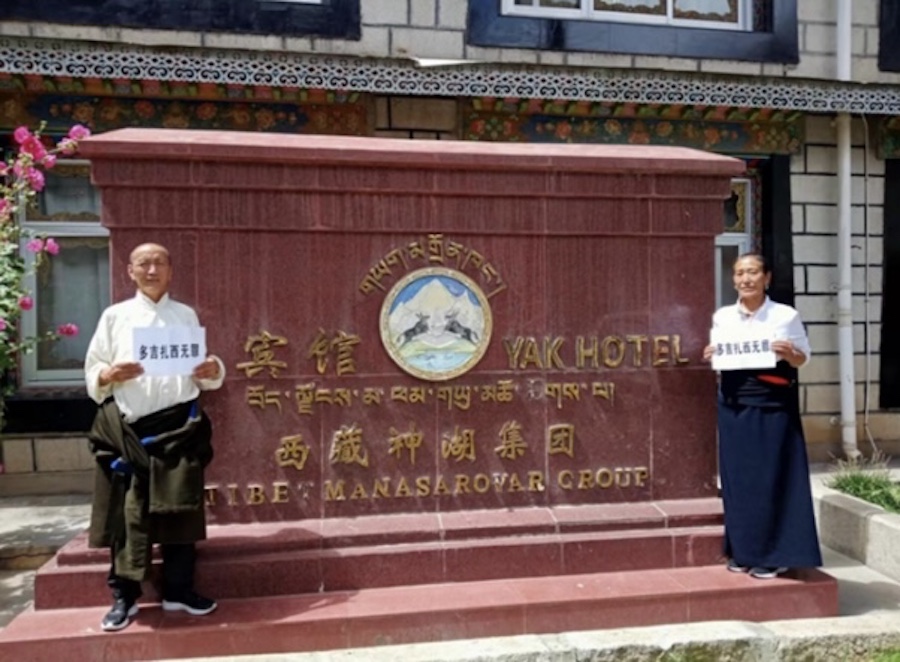By BRAHMA CHELLANEY
NEW DELHI – Seeking to placate longtime rival China, India has subtly shifted its stand on Tibet in a way to clearly recognize the Chinese annexation of “the roof of the world,” delighting Beijing but raising questions about New Delhi’s diplomatic game-plan and spurring concern among Tibetan exiles.
Indian Prime Minister Atal Bihari Vajpayee made one-sided bargains in Beijing recently to showcase as a success a visit that would probably be his last major foreign tour before he gets absorbed in state and national elections at home. The Chinese leadership ably exploited Vajpayee’s desire for a successful visit to extract concessions that present India as willing to accept a secondary role in a China-dominated Asia.
In Beijing, Vajpayee appeared less like the leader of a nuclear-armed India determined to engage China on equal terms and more like a tribute-payer to the fabled Middle Kingdom. While all the effusive statements and concessions came from the Indian side, the Chinese gave no ground and spoke in measured terms on Sino-Indian relations, clearly dominating the outcome.
Vajpayee’s trip would be remembered for his kowtow on Tibet, a large historical buffer between the Indian and Chinese civilizations that the Chinese Communists annexed in 1950 soon after coming to power in Beijing. Vajpayee has tried unsuccessfully to douse the controversy on his kowtow by acting as his own spin master.
The spin cannot conceal that this is the first time ever that India has used the legal term, “recognize” — in a joint document signed by government heads of the two countries — to flatly accept the Chinese-named Tibet Autonomous Region (TAR) as “part of the territory of the People’s Republic of China.”
Insecure about its hold, and unsure of the validity of its claim, on a territory that was mostly independent in history, China sees India as the key to Tibet, whose traditional cultural and trade links were southward.
By handing Beijing the formulation it wanted on Tibet, India has opened itself to more pressure on that issue, especially because it is home to the Dalai Lama and the Tibetan government-in-exile.
The Indian recognition continues a pattern of self-damaging Indian betrayal of Tibet that began under Prime Minister, Jawaharlal Nehru, who gave up the extra-territorial rights India had inherited in Tibet from the British and signed a trade agreement with Beijing in 1954 acknowledging the “Tibet region of China.” The 1954 accord, however, expired in 1962, the year China invaded India. All subsequent Indian governments, seeking to correct Nehru’s original mistake, had maintained that Tibet was an autonomous region within China, rather than a part of China.
Vajpayee, however, has now recognized as part of China the area officially known as TAR, the plateau where much less than half of all ethnic Tibetans live. Also, by narrowing Tibet to just TAR, he has implicitly conceded the forcible incorporation of Tibet’s large outer territories into the Chinese provinces of Qinghai, Sichaun, Gansu and Yunnan.
China has rejoiced over its twofold success in extracting a new formulation that it calls New Delhi’s “first explicit acceptance” of its absorption of Tibet and in making Vajpayee agree to open trade with Tibet from an Indian state — Sikkim — where Beijing does not recognize India’s legal presence.
And just as India deluded itself by interpreting the mention of border-trade posts in the 1954 agreement as de facto Chinese recognition of the Indo-Tibetan frontier, it rushed to similarly advertise the reference to two border-trade points in the newest accord as implicit Chinese recognition of Sikkim’s present status — a claim Beijing immediately denied to the embarrassment of Vajpayee.
Bartering concrete concessions for fond hopes, Vajpayee gifted away New Delhi’s remaining leverage, without persuading China to halt its cartographic aggression in showing three Indian states outside India. He even agreed to a new border-talks mechanism that allows China to further stonewall on its commitment to present maps showing its version of the line of control. India and China are the only countries that are not separated even by an agreed line of control on maps, let alone on the ground.
India’s readiness to sweep core issues under the rug was also brought out, with officials on both sides admitting that Vajpayee did not raise with his hosts either China’s nuclear and missile transfers to Pakistan nor the new flank it has opened against India via naval and listening posts in Myanmar. Vajpayee has not explained how India and China can move, in his words, from “divisive rivalry” to “healthy competition” if the two nations discuss only principles of cooperation and not the problems that divide them.
Why negotiate from a position of weakness and further undermine one’s bargaining capacity? India should be buying time. Another decade of strong economic reforms and growing cooperation with the United States could give India the necessary leverage and self-confidence to deal with China. Given the unsustainable contradiction between China’s communist autocracy and market capitalism, time is on India’s side.
Brahma Chellaney is professor of strategic studies at the Center for Policy Research in New Delhi.









